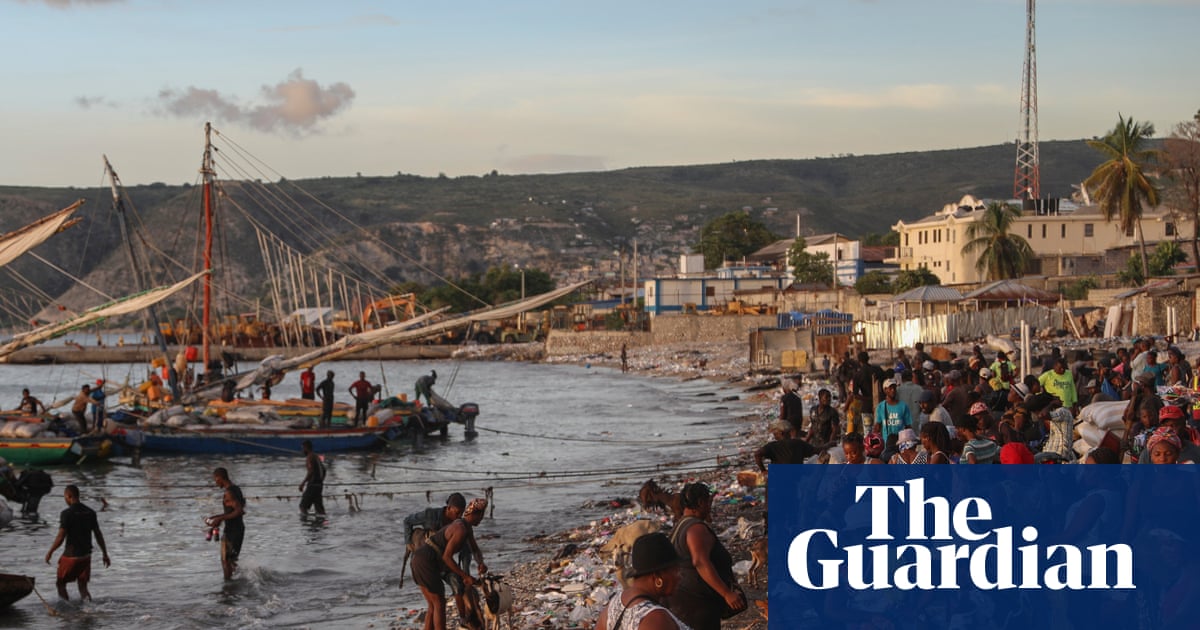Julio de los Santos, now 50, noticed something was wrong when he began losing his strength and experiencing pain in his legs and kidneys. He couldn’t hold tools and could barely stand. His visits to the doctor became more frequent until he ended up in intensive care, where his wife was told to prepare for the worst.
He survived, but today depends on more than 30 medications and a ventilator.
In 2018, doctors had diagnosed De los Santos with an occupational illness caused by exposure to agrochemicals. Uruguay’s human rights institute recommended relocating his family from the area where he worked in the east of the country – a place where a school sits less than 300 metres from plantations and where crop-dusting planes pass overhead.
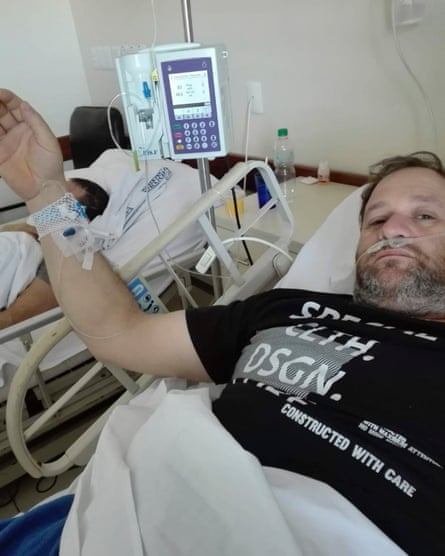
De los Santos’ case is a landmark in Uruguay, where the rice industry drives exports and once represented a sustainability model for Latin America. However, according to researchers, trade unionists and workers, concerns have emerged about the sector’s failure to monitor and protect workers’ health.
The rice industry, often considered an engine of Uruguay’s economy, employs about 30,000 workers and comprises than 500 growers and farms, mainly in the east and north of the country, according to the ministry of agriculture. They have made Uruguay Latin America’s second-largest rice exporter – a remarkable achievement for a country with a population of about 3.5 million.
Between 2024 and 2025, the sector grew by 24%, and 95% of its production was exported. Uruguay’s rice has been shipped to countries including Brazil, Peru, Mexico, Costa Rica, Belgium, the Netherlands, Spain, Portugal and the UK, and profits exceed $500m (£374m).
As global demands on consumer safety and environmental sustainability have increased, Uruguay has ratified several international conventions on pesticides and ozone-depleting substances.
Yet, aligned with De los Santos’ fight, several health studies and community assessments highlight acute and chronic risks from pesticide exposure in Uruguayan rice-producing communities.
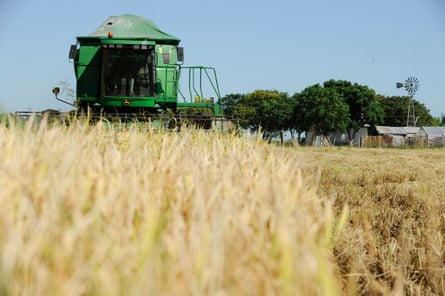
A first study in Bella Union, northern Uruguay, in 2007 found elevated levels of respiratory illnesses, cancer and congenital abnormalities. It reported 60% of children under-two had bronchial obstruction, 37% of women had problems getting pregnant, and 25% had experienced multiple miscarriages, exceeding national averages.
Medical professionals and local organisations have also documented potential exposure risks from frequent use of pesticides, especially herbicides such as 2,4-D and glyphosate, as well as insecticides such as carbofuran, chlorpyrifos, cypermethrin and endosulfan. This often involves aerial spraying that sometimes ignores legal buffer zones, threatening nearby households.
Although the industry has questioned the study, it paved the way for public debate. In 2017, the agriculture ministry banned four agrochemical products – azinphos methyl, methidathion, methomyl and atrazine – considered “highly dangerous”.
Then, last year, the University of the Republic (Udelar) published new findings on health vulnerabilities related to the use of agrochemicals among workers in the rice sector in eastern Uruguay. Following a method developed by the US Environmental Protection Agency, they identified 18 chemicals as part of the sector’s typical technology package.
Led by Nicolás Rodríguez, who has a PhD in public health, researchers studying workers’ exposure to agrochemicals in the rice sector found that Uruguay lacks specific epidemiological and toxicological studies and identified deficiencies in the public agencies responsible for regulating the use of agrochemicals. According to the survey, there is a lack of training and clinical preparation in health services for identifying cases, as well as persecution of workers, who fear that they will lose their only source of employment.
Although fears persist that pesticide poisoning is widespread, the problem remains under-reported. Between 2013 and 2021, the government-owned insurance company, BSE, registered only 938 complaints from the rice sector, of which just one was linked to the use of agrochemicals. In the period 2017-2021, the country’s Centre for Toxicological Information and Advice (Ciat) received 195 consultations, of which 35 were related to agrochemicals and workers in the Merín Lagoon basin, according to Udelar’s study.
Experts say Uruguay’s lack of disease notification systems and records of agrochemical use hampers efforts to address rural occupational health effects. Researchers also noted that businesses and authorities downplay risks, leaving workers exposed to hazards.
“We need to improve our record-keeping and ensure that records are easily accessible,” says Rodríguez, presenting his research data at a public hearing. “Local healthcare professionals need to be trained to recognise potential poisoning. Training is also required for workers and employers in the sector, as well as for public policymakers, so that these measures can be implemented.”
According to José Bonica, former president of the national institute of agricultural research (INIA), the rice industry globally faces big environmental problems, which also occur in Uruguay. Two concern the amount of water required and the quantities of methane generated to produce a crop. The third is the use of agrochemicals.
“This has been a long learning curve,” Bonica says.
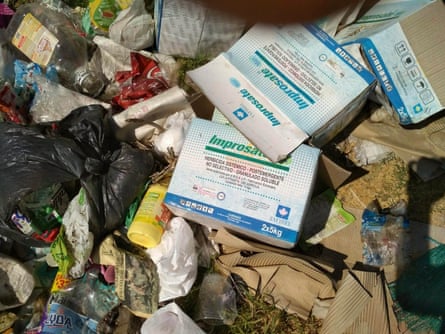
He recalls that in the 1980s, workers known as “the flags” waved banners to signal to the crop-dusting plane’s pilot where to unload agrochemicals. That evolved, and those people had to wear masks to breathe properly. Later, planes came equipped with GPS, so there was no longer a need for people in the field.
“Those who loaded the planes or worked on the runway adapted,” Bonica says, “and today they must hold a certificate proving they have been trained for a certain period.”
after newsletter promotion
Another cause of exposure is that workers and their families live where they work, so agrochemicals are part of their environment. As Uruguay lacks regulation on aerial crop-spraying near towns, there is no control over concentrations or the dumping of glyphosate and other chemicals into waterways and the soil.
The challenge lies in proving cases of poisoning or diseases that could be linked to agrochemical handling, which are rarely acknowledged by public health authorities. Two exceptions occurred in 2019, when a US court ordered Monsanto to pay about $80m (£60m) to Edwin Hardeman, a retired rural worker, and the French courts ruled in favour of Paul François, a cereal farmer, in two cases involving glyphosate poisoning.
In Uruguay, De los Santos’ case is far from closed. In the first instance, the court recognised the relationship between his condition and glyphosate use. The appeals court reversed the verdict, which was later affirmed by the supreme court, allegedly due to difficulties in determining whether pesticides from the company he had worked for, Arrozal 33, were the sole cause of his condition.
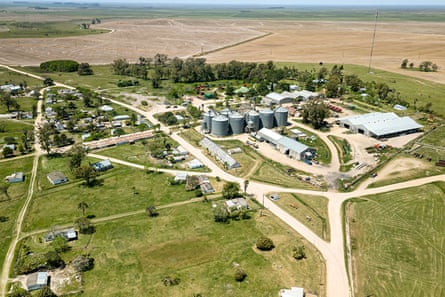
His case has now transcended borders, and De los Santos is waiting for the Inter-American commission on human rights to assess it and refer it to the Inter-American court of human rights for reparation.
Meanwhile, campaigners note that there has been progress in raising awareness of the problem. A report by the public health ministry, dated 19 April 2018, confirmed a series of severe failures in occupational health and safety in the Merín Lagoon basin, at a mill in Vergara and at the maintenance and drying plant at Arrozal 33.
The ministry highlighted environmental problems, including insufficient controls on the village’s water supply, inadequate waste management, and violations of exclusion limits for aerial and ground spraying. Arrozal 33 was instructed to promptly provide the required environmental permits.
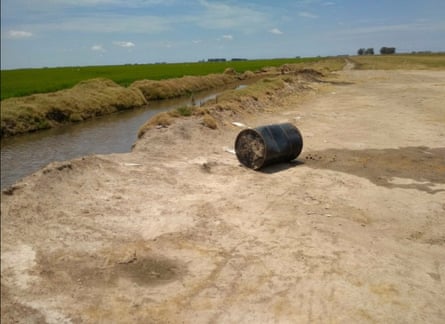
Additionally, a 2023 report from the environment ministry confirmed that the water quality in the Merín Lagoon’s main tributaries was in an alarming eutrophic state due to excess nutrients, such as nitrogen and phosphorus.
Arrozal 33 was approached for comment.
Campaigners say the problem is that the entire rice industry in Uruguay does not consider agrochemical use problematic, and they argue that its use is limited.
Alex Hughes, director of the input control division of the ministry of livestock and agriculture, says Uruguay employs a land-rotation system that alternates pasture and crops, avoiding monoculture. According to him, the country relies entirely on flooding irrigation, uses certified seeds, and benefits from a temperate climate that helps minimise fungi and insect problems.
He notes that with 95% of the product being exported, the country’s policies are mainly shaped by the needs of its customers. “It is an exporting, dynamic and highly integrated sector,” Hughes says.
The business union says agrochemicals are essential for achieving economically viable yields in quantity and quality in food production. “The real impact on health lies more in how agrochemicals are managed than in the agrochemical that lands on rice,” says Raúl Uraga, operations manager at Saman, the biggest Uruguayan company dedicated to the production, marketing and export of rice and derived products.
Marcelo Amaya, a representative of the Organisation of the National Union of Wage Earners (Unatra) and of the rice workers’ union (Sutaa), which numbers about 2,500 workers, says the law “clearly states that the agro-industries are responsible for implementing the security protocols, and they must ensure workers comply with them”.
“There are recommendations that are not followed, in application and use of pesticides, as well as in matters of worker care,” Amaya says. “It is a cultural issue, and there is a lot of work to be done in terms of awareness. It is part of a denial, insisting that nothing is happening.”

 1 month ago
23
1 month ago
23



